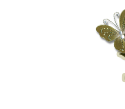It's hard not to get excited about the impending Easter Holiday! Not only does Easter hold religious importance, but it often signifies the presence of loved ones, great food and the beginning of the Spring season.
It's also very easy to get inspired by spring time colours, scents and scenes as pastel hues, smells of fresh flowers and floral prints become trendy.
Perhaps the most symbolic shape which reminds us of Easter is, of course, the egg. Often adorned with paint, stickers and colourful foils, Easter egg decorations are plentiful at this time of year. And what better to use as an inspiration for handmade goodies?
Our brains are running on overdrive with Easter and Spring-time crafting ideas which we have been both inventing and pinning on Pinterest.
The first project we wanted to try was one to make egg-shaped beeswax candles using real egg shells! This was obviously bound to be both a little messy and tricky, but proved to be a worthy cause!
The recipe that we initially found called for natural yellow beeswax which would work just as well, but using white beeswax with candle dyes made for candles that look a little more festive.
Here's what you will need to make three candles:
Three
real eggs
Approximately
210 g of white beeswax pastilles
For starters, you will want to wash your eggs with soap and water. I would actually recommend having more eggs than three, even if you only intend on making three candles. Reason being, that you will more than likely break a few (it's fairly inevitable).
Next, you will need a sharp object to poke two holes in your egg. I tried both scissors and a large gauge metal skewer, and found the skewer to work better.
When making holes, I set my egg in the middle of a roll of tape that I had which held it perfectly. You can also sit it in the egg carton.
Poke one hole in the top, and one in the bottom of your egg. You way want to kind of scratch firmly on the surface of the egg where you want the hole to be. This helps loosen the firm shell. Once you have a little scratch mark, or indent, twist the skewer with gentle force until a hole is created.
Once you have poked a small hole in the top and bottom, you can make the hole on the top (the smaller end) larger by chipping a bit of the shell away. Your goal is to have a small hole on the bottom and a larger hole on top. This is because on the bottom, you want to just be able to fill it with a wick. The top is where you will pour in the wax, so the bigger the better to some extent. You still want the top to resemble an egg shape, so don't make it too big!
Next, over a bowl, turn your egg upside down so that the larger hole on the top is facing downward and blow the egg out! This is why I suggested cleaning them. Ensure you get as much egg out as possible! You will be able to hear whistling of air out of the hole and should be able to see inside well enough to know when it's cleaned out.
Then, feed your HTP 1212 wick through the bottom of the egg through the top hole.
You then need to use tape, clay, or maybe even gum to the bottom of the
egg to secure the wick to the bottom and seal any areas where liquid wax
may seep out. I used tape. Don't be scared to use a lot! You're going
to peel it off anyways.
Next, sit your egg back in the carton, or an egg cup where it will sit upright and securely.
Then, melt your wax. I found that you will need approximately 70 g of beeswax per egg. This gives you some excess wax, but you'll probably find that you need it, as it can be hard to land all the wax inside the egg!
When your wax has melted, add a desired candle dye. You can add as much or as little as you want, by shaving bits off the dye block with a small grater, knife or scissors. Remember that your wax will always dry a lighter colour than it looks when it's melted. You can test the colour by dipping in the edge of a spoon or napkin and letting it dry.
When you're happy with the colour, pour your melted beeswax very slowly and carefully. This is the part that can get pretty messy, especially if your pot doesn't have a spouted edge! Hence the extra precautionary beeswax.
You should still have a little wax left. Either keep this hot, or put it aside and re-melt after about 10-20 minutes. Beeswax shrinks when it cools, you will notice that it will sink down in the egg after a while, and you will want to fill this up to create the full egg shape.
Wait 1-2 hours before removing the shell. Once you feel that your wax has cooled enough, peel away the shell of the egg. You may have some eggy residue on your candle, but it can be easily washed off with water and soap if desired.
You may want to shave off some wax near the top of the egg to smooth it off. I also used a heat gun to help smooth and shape the candles I had made for display in the store, but this really wouldn't be a necessity for at-home use.
The wick tab at the bottom really helps the candles to stand on their own, so you can display them in so many ways.
Finally, trim down your wick, light, and enjoy! We can just picture these making the cutest addition to your Easter festivities. If you try these awesome candles, please feel free to share your story and experience with us!
As always, everyone at Voyageur wishes you the best.
PS. Keep your eyes out for even more upcoming Easter and Spring inspired project ideas!






























Easter egg decorations are plentiful at this time of year. And what better to use as an inspiration for handmade goodies?easter egg hunt clues
ReplyDelete